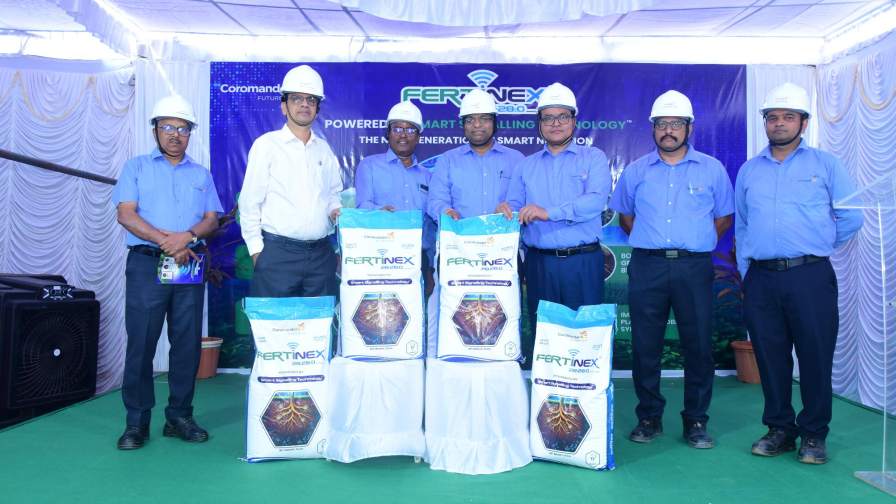States Dust Off Contingency Plans as Drought Looms
Drought-like conditions in some parts of the India have prompted the government to recommend contingency crop measures. During the past week, the country has received 1% above normal monsoon, but rain deficiency in these states continues to remain in the range of 60-70%.
The agriculture ministry has earmarked 175 lakh hectares – about 16% of the country’s cultivated land — to be put under the contingency plan on priority basis. It has also arranged for the distribution of short-duration variety seeds of various crops, including paddy, bajra, castor, sunflower, urad, til, soybean and other pulses for distribution in the most affected states: Rajasthan, Gujarat, Maharashtra, Andhra Pradesh, Madhya Pradesh, Karnataka and Tamil Nadu.
About 40% of the cultivable area is under irrigation and good monsoon is extremely important for agriculture. The contingency plans, which usually come into effect after July 15, help diminish on crop loss and farmers stress.
As per the second estimate of the India Meteorological Department, rain during the June to September season is likely to be 96% of the Long Period Average (LPA). But, the storage level of water in 84 key reservoirs is 67% of last year’s levels, and that causes concern. This worry is further aggravated by the meteorology department’s statement that “there is also substantial probability (36%) for emergence of weak EL Nino conditions during later part of the monsoon season.”
It’s good that the ministry has ensured the availability of seeds as well, said Ashok Gulati, chairman, Commission for Agricultural Costs and Prices (CACP). The government should focus on drawing drought-proof plans rather than contingency plans. In India 60% of the land is rain-fed.
The Effect on Inputs
As a result of the deficient monsoon rains, farm input companies are feeling the pinch of with sales plunging 30%-50% for the season, largely in the areas of fertilizers and fungicides.
Overall rain deficiency has been pegged at 23% with Karnataka and Maharashtra severely affected. Kharif sowing taken up during the monsoon season accounts for a large share of revenue for farm input suppliers because major crops such as paddy, pulses, cotton, tobacco, groundnuts are cultivated during this season. The dry spell has been unprecedented. It has come on top of a price rise of phosphate fertilizers, which hit small farmers hard.
Sales for the season are down by almost 30%, said SV Sreenivasa Rao, chief manager, marketing, Zuari Industries, a major producer of fertilizers, fungicides and herbicides. Prices of phosphate fertilizers have been shooting up since the introduction of a nutrient-based subsidy. The price of di-ammonium phosphate (DAP) has more than doubled.
Many farmers have shifted to cheaper urea, which has caused an imbalance in soil conditions. Insufficient rains will only worsen the situation, Rao said, adding that heavy showers in the next few weeks will not offset the losses sustained now because the damage has already been done.
Over the last few weeks, India Rupee has depreciated significantly against dollar and yuan. As a result, the cost of input raw materials, which are imported have also increased. The agrochemical companies may not be able to absorb the increased prices and are likely to pass on to the farmers.
The Government Response
Due to the drought conditions, the government of India has increased the minimum support price for summer crops as the cost of production has gone up for farmers.
To balance the lower yields, crop prices have been increased in the double digits for corn, paddy, groundnuts, sunflower seed and soybeans. Home Minister P. Chidambaram said the increase has been made on the basis of the recommendations given by the Commission for Agricultural Costs and Prices.
The increase will encourage farmers to grow more. However, there is apprehension that this may lead to higher inflation, but the impact will be seen in the second half of the current financial year.
Ongoing drought conditions will have an enormous impact on production. Here is a look at expectations:
The Exim Bank of India, in its report “Technological Interventions in Indian Agriculture for enhancement of Crop Productivity” indicated crop yield per hectare in India is significantly lower than the world average. The yield of rice is less than one-third of China. Seed quality, soil degradation, lack of mechanization etc. are some of the reason for low crop yield.
The cotton acreage in India is likely to shrink by about 9% this year. Due to repeated changes in export policy in the last season, there was high volatility in cotton prices. After the ban was imposed on export of cotton, prices crashed to less than $60 a quintal. Farmers are planning to switch over to more remunerative crops like guar, soybean and groundnut. As a consequence, the inventory level of Bt cottonseed might increase considerably.
This year India had record production of food grain. The grain stock with the Government procuring agencies has reached an “unprecedented level.” This is causing storage problem, particularly as monsoon is setting in. Encouraged by record production of food grain during last two years, the government will supply 14.18 quintal of quality seeds this sowing season, compared with the demand of 12.96 million quintal.
India produced 35.36 million quintal seeds during 2011-12. The seed industry in India is expected to grow by 50% over the next two years to reach $3 billion.
As per the recent estimate of the Directorate of Cashew and Cocoa Development Board, cocoa production in India during the current year is likely to exceed last year’s production of 12,900 tonnes.
The demand for cocoa in India is increasing steadily as the chocolate market worth $15 billion is growing. Currently, India imports half of its total requirement of cocoa.





